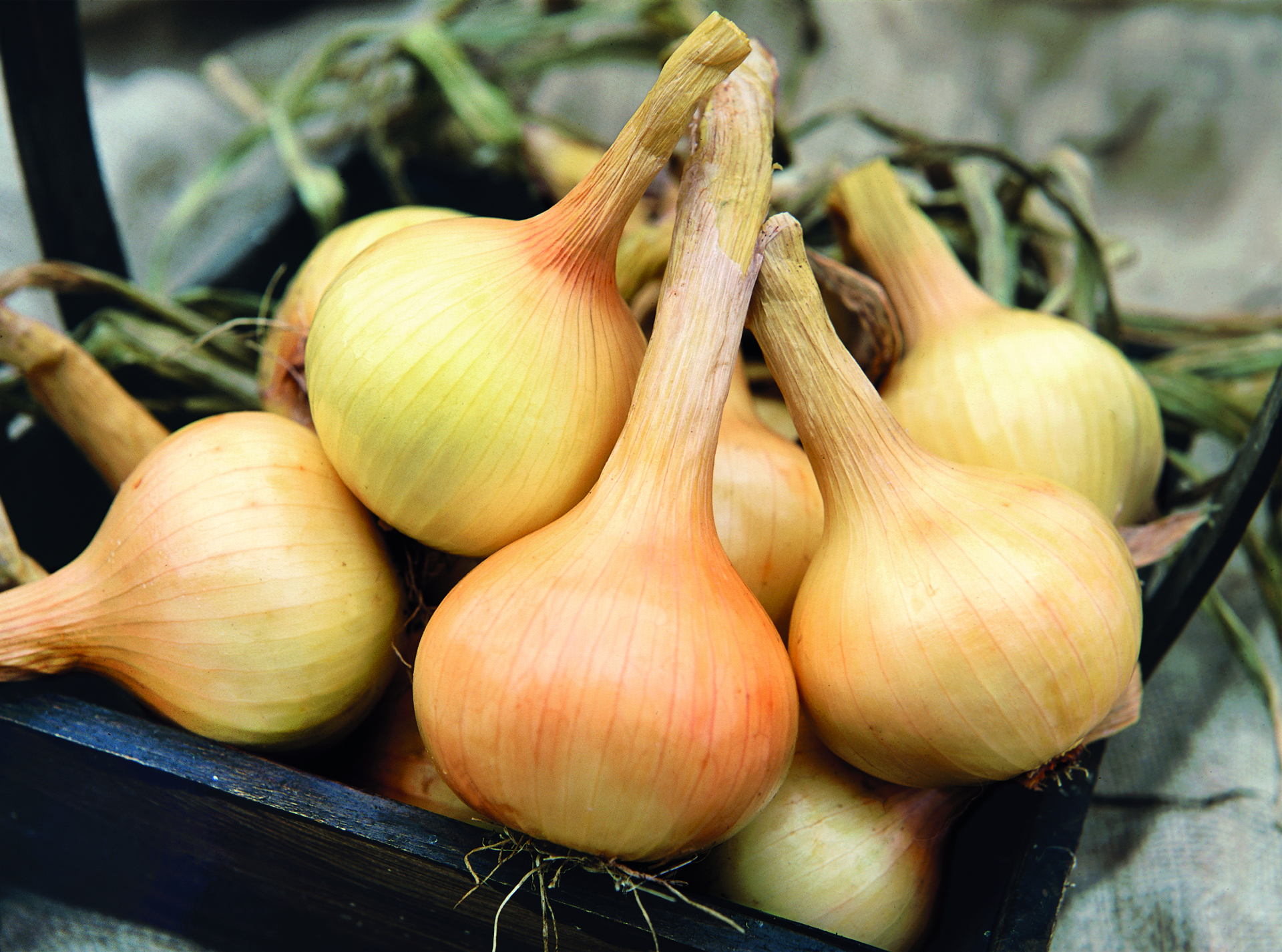When to harvest onions – to get the most from your homegrown crop
Identifying when to harvest onions is essential for reaping the tastiest produce to both eat and keep


Knowing when to harvest onions is key if you want to get the most flavorsome crop. With the right timing you can not only enjoy fresh ingredients on your plate but to store away for the weeks and months ahead.
The good news it’s not that scientific or complex either. By just keeping an close eye on your plants when growing onions, and knowing which key signs to look for, you can reap your homegrown bounty with confidence.
As a guide, you can usually harvest around 100 to 120 days after the date when you planted onions. This can vary due to specific varieties, ground and weather conditions but is a useful marker for watching for the tell-tale signs such as yellowing leaves and when the erect foliage suddenly falls over.
When to harvest onions
Kelly Funk, president of Park Seeds says, ‘If you want crisp, tender green onions, harvest the bulbs just after the swelling begins. For mature bulbs, wait until the tops fall over after the growing season. Then dig up the bulbs, cure for three weeks, and store onions in a cool, dry place.’
When are fall-planted sets ready to harvest?
According to the RHS, ‘Autumn-planted sets are ready to harvest by early to mid-summer.’
Avid veg growers Jim and Mary from Old World Garden Farms also comment: ‘As spring rolls around, your onions will come back to life. They can be harvested at any point as smaller onions or allowed to grow to full size for a mid to late summer harvest.’
How to tell when spring-planted onion sets are ready
‘Onions should be harvested in August and September,’ say the Southern States Cooperative. ‘When your onion bulbs are ready for harvesting the leaves at the top will bend over. If they don't, bend them over yourself and leave them in the ground for another two weeks. When harvesting lift the bulbs gently with a garden fork and spread them out to dry in the sun for two to four weeks. Turn them frequently, so they dry evenly.’
Do different colored onions mature at different times?
In a word yes. Scallions or green onions are usually ready to pick in as little as three weeks or once their fleshy green top growth reaches around 8 inches in height.
Red and white onions grown for their bulbs will obviously take longer to mature. If grown from seed both red and white onions will take 100 to 120 days. If you planted sets expect mature bulbs to be at their best in 60 to 80 days.
Should I pick my onions before they flower?
As soon as you spot a flower spike emerging from a growing onion snip it off. This will prevent the plant from setting seed and hopefully stop from the bulb from splitting. Either way it is best to lift and use these plants relatively quickly, as they don’t tend to store well.
Can you leave mature onions in the ground over winter?
If you delay harvesting mature onions and leave them in the ground during the coldest months, they will begin to multiply. In the same way as a garlic forms individual cloves, an onion will send out tiny bulbettes. These can be separated and replanted as sets in spring.
Sign up to the Homes & Gardens newsletter
Design expertise in your inbox – from inspiring decorating ideas and beautiful celebrity homes to practical gardening advice and shopping round-ups.

Journalist Jill Morgan has spent over 20 years writing and editing gardening, interior and property features. Titles she has worked on include The English Home, House Beautiful, Ideal Home, Houzz and Modern Gardens and she writes regularly for H&G as a Contributing Editor. Whilst she is a dab hand at renovation projects and DIY, she is happiest when out digging in the garden or planning a new border.
-
 5 surprising but brilliant ways to clean with old socks – from perfectly buffing stainless steel to deterring pests naturally and more
5 surprising but brilliant ways to clean with old socks – from perfectly buffing stainless steel to deterring pests naturally and moreTackle dust in tricky corners, clean your mirrors and even banish bad odors with those rogue single socks
By Andy van Terheyden Published
-
 How to grow astilbe – expert advice on cultivating this shade-tolerant flowering perennial
How to grow astilbe – expert advice on cultivating this shade-tolerant flowering perennialShade-tolerant and pest-resistant - astilbe are hardy and tough perennials that can thrive in many settings
By Ellen Wells Published